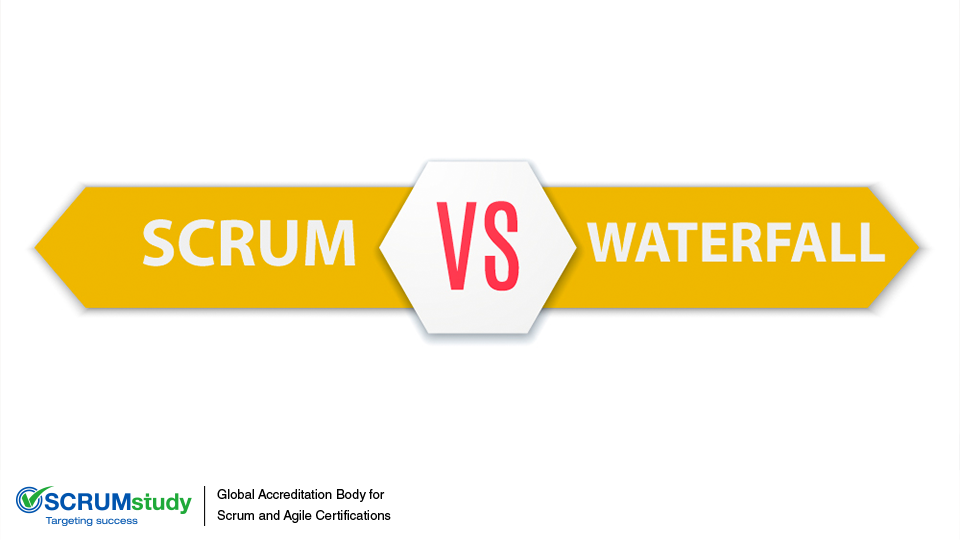Agile vs. Traditional Project Management: A Comparative Analysis
Posted by SCRUMstudy® on September 10, 2022
Categories: SBOK® Guide
Traditional project management places a strong emphasis on extensive upfront planning, regardless of whether project requirements are fully understood. This detailed planning aims to establish fixed variables such as time, cost, and scope. However, in today's rapidly evolving environment, project requirements often change. As a result, the considerable time invested in upfront planning can become wasted if significant changes to the specifications occur later on.
While Agile is a general approach used for software development, agile emphasizes on teamwork, frequent deliveries of working software, customer collaboration, and time boxing events and allowing the ability to respond to change quickly.
Scrum is one of most common used form of Agile. Scrum encourages iterative decision making and reduces time spent on unknown variables which are prone to change. Scrum embraces change like no other. Scrum is based on the concept to deliver the greatest amount of value to the customer in the shorted period of time, ensuring a potentially shippable product at the end of each sprint otherwise called iteration.
Traditional project management emphasis on linear processes, comprehensive documentation, spends high time on upfront planning; all requirements prioritization is fixed for the lifetime of the project, and works in managed organization. Traditional project management is adverse to changes and follows a formal change management system. The Return on Investment is after the project is closed and the customer inputs or the involvement in the project may vary depending on the project lifecycle.
While Agile follows an iterative processes and are divided into sprints of shorter span, as agile is more open to changes in the specification, there is less amount of time spent on upfront planning, prioritization of requirements is based on business value and the product backlog is frequently groomed by the product owner. Agile follows self-organized style as individuals are not managed and the organization is de-centralized. Since Agile is split in iterations they pick up small amount of work and rest can be changed and updated to the prioritized. In Agile the Return of Investment is achieved early as release happens in phased and received throughout the project life. The customer involvement in the project is very high as the development work on the concept of customer collaboration.
These are the major differences between a traditional vs agile project management.
Agile vs Waterfall
Posted by SCRUMstudy® on August 17, 2022
Categories: Agile Product Owner Scrum Scrum Master Training
Agile and Waterfall are two different methods used in managing a project. Both the methods have their own pros and cons and choosing one model is based on many project-centric factors.
- Waterfall Method
The Waterfall model is a progressive design process which in the software development industry goes through stages such as Conception, Initiation, Analysis, Design, Construction, Testing, Implementation, and Maintenance and steadily moves downwards similar to a waterfall flowing down. After one stage is completed it moves to another and every stage has its own goals. This model is based on the standard workflow process which is followed in manufacturing and construction industries.
The benefit of using this model is that a project is divided into separate compartments which in turn decrease the dependency on individuals of a team. Any team member who leaves the project during the transition stages would not affect the execution of the project. This method also requires concrete documentation.
The cons of this method is that it is inflexible. In this method it is not possible to go back to a previous stage to alter the design in anyway. Hence it is very important to collect the requirements at the initial stage. This method is based on the logic that once we spend considerable amount of time in gathering the comprehensive requirements at the start of the project helps in saving time and effort later on.
- Agile Method
On the other hand Agile method is incremental approach. The team works on small modules and then responds to user’s altered requirements rather than following a pre-determined plan. The design is simple and changes can be made as work progresses.
When compared to Waterfall method, here the testing and responding to user change requirements can happen during the same time in the course of the project. Here interactions among business stakeholders is prioritized as compared to tools and processes.
This method became popular in 1990s after the many found the drawbacks of traditional Waterfall methods.
Conclusion
As you can see both the methods have their own advantages. Though Agile was developed to combat the disadvantages found in Waterfall method, Waterfall method still is considered in environments which is stable
Agile is considered to be a lightweight approach. The team focuses on smaller areas of work and hence overhead becomes less. The cost of the project also becomes less. Agile is more suitable when the user requirements are not clear and where the business environment is not stable. Also successful implementation of Agile requires skilled developers and also stakeholders who know what they exactly want.

.jpg)
